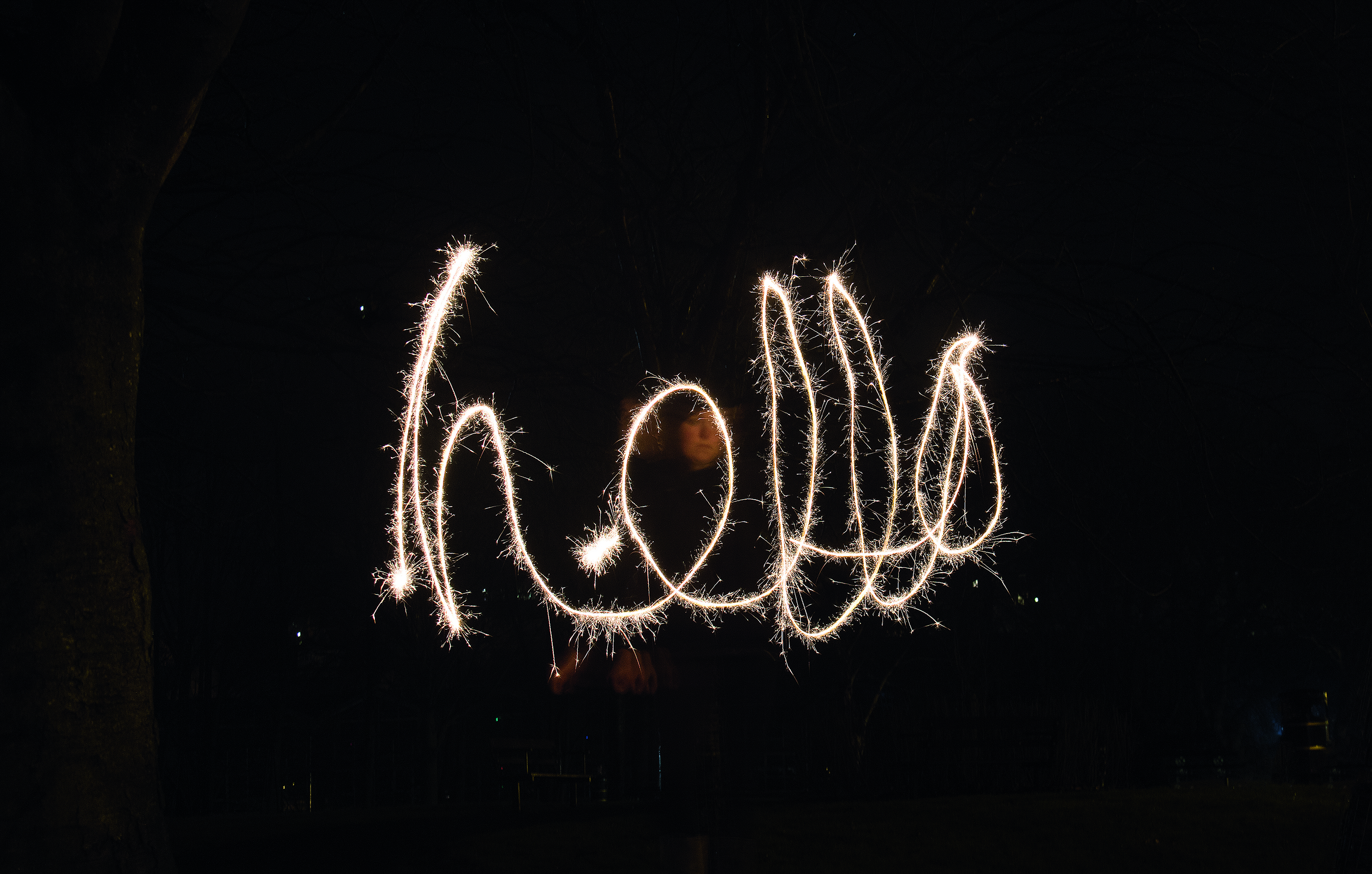How to use party sparklers for light-painting with a difference
Simple and fun way to create photo messages

Learn how to capture sparkler drawings and text
Time needed: 30 minutes
Skill level: Beginner
Kit needed: Sparklers, Cable release or remote control, Matches or lighter, Tripod
Light-painting is always a fun way to spend an evening outdoors, but it can get dull just using a plain torch to draw shapes.
Why not swap your usual light source for a party sparkler? It adds a celebratory touch to the shoot, as well as a glittery quality to the light itself. It’s best to set up in a garden or quiet street, away from excitable pets or children – the key is to pick somewhere you’ll have plenty of room to move the sparkler after firing the shutter. Because it’ll be dark, it might take a few attempts to get the composition and focus right. Using a wide-angle lens is the best way to fit long words into the frame. Once you’ve got the camera position and settings sorted, call in a few friends, set multiple sparklers moving across the exposure, and get the party started!
REMEMBER YOUR WRITING TECHNIQUE
You’ll need to write out the letters backwards so that the camera records the words the right way. Face the camera, outstretch your arm and write backwards from right to left. If you can’t get the hang of this, write normally and flip your images using editing software later on. It takes practice to know how much of the scene is covered in the composition.
STEP BY STEP: Light 'em up and spell it out!
Move a sparkler during a long exposure and add words to your evening scenes

01 CAMERA SETTINGS
Shoot in Shutter Priority (Tv) mode. The ideal shutter speed depends on the length of the word or speed of your drawing, but 10 secs is a good start. Because it was fully dark, we set an ISO of 400.

02 FOCUS AND FIRE
The best camera deals, reviews, product advice, and unmissable photography news, direct to your inbox!
Pre-focus on where the sparklers are going to be. It’s easiest to use Manual mode for this. Put on gloves (for protection and warmth), light the sparkler, fire the shutter remotely and start writing.

03 TEST AND PERFECT
Keep the sparkler moving smoothly and consistently across the frame as you write. Review the shot, and tweak the shutter speed and composition if you can’t get all the words or image into the frame.

Lauren is a writer, reviewer, and photographer with ten years of experience in the camera industry. She's the former Managing Editor of Digital Camera World, and previously served as Editor of Digital Photographer magazine, Technique editor for PhotoPlus: The Canon Magazine, and Deputy Editor of our sister publication, Digital Camera Magazine. An experienced journalist and freelance photographer, Lauren also has bylines at Tech Radar, Space.com, Canon Europe, PCGamesN, T3, Stuff, and British Airways' in-flight magazine. When she's not testing gear for DCW, she's probably in the kitchen testing yet another new curry recipe or walking in the Cotswolds with her Flat-coated Retriever.

